
Tom Clancy's Rainbow Six is a 1998 tactical shooter video game developed and published by Red Storm Entertainment for Microsoft Windows, with later ports for the Nintendo 64, PlayStation, Mac OS, Game Boy Color, and Dreamcast. It is the first installment in the Rainbow Six series. Based on the Tom Clancy novel of the same name, the game follows Rainbow, a secret international counterterrorist organization, and the conspiracy they unravel as they handle a seemingly random spike in terrorism.

A tactical shooter is a sub-genre of first- and third-person shooters, associated with using strategy, planning, and tactics in gameplay, as well as the realistic simulations of ballistics, firearm mechanics, physics, stamina, and low time to kill. Dating back to strategy games from the late 1980s, the genre first rose to prominence in the late 1990s with the releases of several well-received tactical shooters. The popularity of the genre saw a decline in the late 2000s as fast-paced "arcade"-like action shooters rose to prominence, it has seen a revitalization since the mid-2010s with the successful releases of several modern tactical shooters.

Tom Clancy's Ghost Recon is a tactical shooter video game developed by Red Storm Entertainment and published by Ubi Soft in 2001 for Microsoft Windows. It is the first game in the Ghost Recon series. It was ported to Mac OS, Xbox and PlayStation 2 in 2002 and to the GameCube in 2003. Ports for N-Gage and Game Boy Advance were planned, but later canceled. Unlike Clancy's other tactical shooter series, Rainbow Six, Ghost Recon is not based on any of his books.
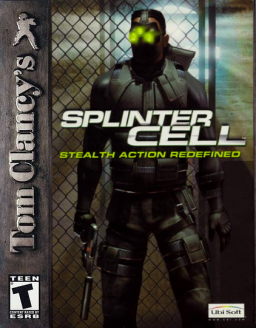
Tom Clancy's Splinter Cell is a 2002 stealth game developed by Ubisoft Montreal and published by Ubisoft. It is the first game in the Splinter Cell series. Endorsed by author Tom Clancy, it follows the activities of NSA black ops agent Sam Fisher. The game was inspired by both the Metal Gear series and games created by Looking Glass Studios, and was built using Unreal Engine 2.

Tom Clancy's Rainbow Six 3: Raven Shield is a 2003 tactical first-person shooter video game developed by Red Storm Entertainment and published by Ubi Soft for Microsoft Windows and Mac OS X. It is the third entry in the Rainbow Six series. The game's plot follows Rainbow, a secret international counterterrorist organization, as they respond to a wave of terrorist attacks threatening South America.

Tom Clancy's Splinter Cell: Pandora Tomorrow is a 2004 stealth game developed and published by Ubisoft Shanghai and Ubisoft Milan. The game is the sequel to Splinter Cell and the second game in the Splinter Cell series endorsed by writer Tom Clancy. It follows the covert activities of Sam Fisher, an agent working for a black-ops branch of the National Security Agency (NSA) called "Third Echelon". Michael Ironside returns to voice Sam Fisher, while Dennis Haysbert voices the character Irving Lambert, Fisher's boss, making this the only time he is not voiced by Don Jordan. Lalo Schifrin provides the theme music for the game.

The Sum of All Fears is a 2002 tactical shooter video game which is developed by Red Storm Entertainment and published by Ubi Soft. It was released for Microsoft Windows, PlayStation 2 and GameCube, based on the Ghost Recon game engine; another version was released for the Game Boy Advance.

Tom Clancy's Rainbow Six: Lockdown is a 2005 tactical first-person shooter video game published by Ubisoft for the PlayStation 2, Xbox, GameCube, and Microsoft Windows. It is the fourth game in the Rainbow Six series. The game's plot follows Rainbow, an international counterterrorist organization, as they battle a terrorist organization that has stolen a deadly bioweapon.

Worms World Party is a 2001 artillery turn-based tactics video game developed by Team17, and is the sequel to Worms Armageddon in the Worms series. As with the previous games in the series, players take turns controlling their teams and using available projectiles, firearms, explosives, and equipment to destroy all opposing teams and manoeuvre across a specified and highly destructible map.

Hidden & Dangerous is a 1999 tactical shooter video game developed by Illusion Softworks and published by Take-Two Interactive and TalonSoft for Windows, Dreamcast and PlayStation. The PlayStation port of the game was developed by Tarantula Studios. It is regarded as a pioneering tactical shooter. A sequel, Hidden & Dangerous 2, was released in 2003.

Bill Brown IV is an American composer of music for video games, films and television. His work appears on Microsoft's Windows XP operating system, as creator of the system sounds, and as music for the tour software. His father was New York City radio disc jockey, Bill Brown (III).
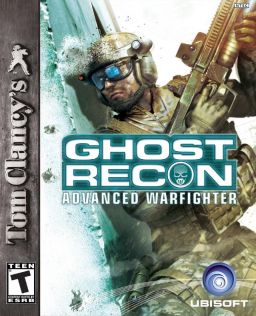
Tom Clancy's Ghost Recon Advanced Warfighter (GRAW) is a tactical shooter video game released for the Xbox 360, Xbox, PlayStation 2 and Microsoft Windows in 2006. As in previous Ghost Recon games, players command their team while neutralizing hostile forces and completing various mission objectives. These objectives can range from escorting friendly units across the map to rescuing hostages or taking out enemy artillery.

Tom Clancy's Rainbow Six: Critical Hour is a 2006 tactical first-person shooter video game developed by Ubisoft Quebec and published by Ubisoft exclusively for the Xbox. It is the fifth game in the Rainbow Six series. The game's plot, set during John Clark's retirement as leader of international counterterrorist organization Rainbow, recaps several past missions Clark handled during his time commanding Rainbow.
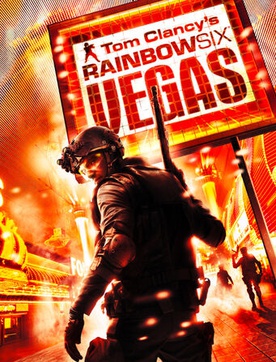
Tom Clancy's Rainbow Six: Vegas is the sixth game in the Rainbow Six series of video games. It was released in November 2006 for the Xbox 360, December 2006 for Windows, and in June 2007 for the PlayStation 3 and PlayStation Portable. The game's storyline follows a new team that is dispatched to Las Vegas, Nevada to defeat international terrorist Irena Morales and her army of mercenaries that are repeatedly attacking key locations in the city. A sequel developed by Ubisoft Montreal was released on Xbox 360, and PlayStation 3 consoles in March 2008 and on PC in April 2008. The game is also playable on Xbox Series X with online features still available.
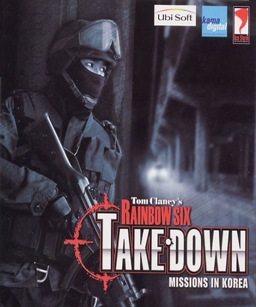
Tom Clancy's Rainbow Six: Take-Down – Missions in Korea is a 2001 tactical first-person shooter video game developed and published by Kama Digital Entertainment in cooperation with Red Storm Entertainment and Ubi Soft. A non-canon spinoff of the Rainbow Six franchise, Take-Down was only released in South Korea for Microsoft Windows. The game's plot follows the international counterterrorist organization Rainbow as they handle terrorism and organized crime in South Korea.
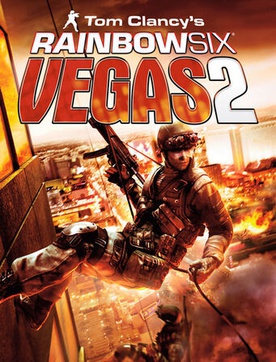
Tom Clancy's Rainbow Six: Vegas 2 is the seventh installment in the Rainbow Six series. It is a first-person shooter video game and the sequel to Tom Clancy's Rainbow Six: Vegas. It was announced by Ubisoft on November 20, 2007. The game was released for the Xbox 360 and PlayStation 3 in March 2008. The Microsoft Windows version, however, was delayed until April 2008. It was released in Japan on April 24, 2008, for the Xbox 360 and on May 29, 2008, for the PlayStation 3. This game is also available for Xbox One and Xbox Series X/S via backward compatibility.

Tom Clancy's Rainbow Six: Shadow Vanguard is a 2011 first-person shooter video game developed and published by Gameloft for iOS, Xperia Play and Android devices. The game is a remake of the original Tom Clancy's Rainbow Six video game.
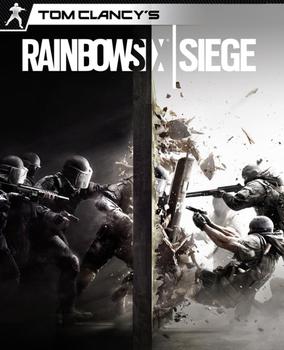
Tom Clancy's Rainbow Six Siege is an online tactical shooter video game developed by Ubisoft Montreal and published by Ubisoft. It was released worldwide for PlayStation 4, Windows, and Xbox One on December 1, 2015; the game was also released for PlayStation 5 and Xbox Series X/S exactly five years later on December 1, 2020. The title received a port for Google Stadia on June 30, 2021, and one for Amazon Luna in January 2022. The game puts heavy emphasis on environmental destruction and cooperation between players. Each player assumes control of an attacker or a defender in different gameplay modes such as rescuing a hostage, defusing a bomb, and taking control of an objective within a room. The title has no campaign but features a series of short, offline missions called, "situations" that can be played solo. These missions have a loose narrative, focusing on recruits going through training to prepare them for future encounters with the "White Masks", a terrorist group that threatens the safety of the world.

Tom Clancy's is a branding used by video game company Ubisoft for several video games, some of which feature the works of American author Tom Clancy, while others do not. Various sub-series are often unrelated to each other with a few exceptions, although most are shooters set in modern or near-future military settings.



















